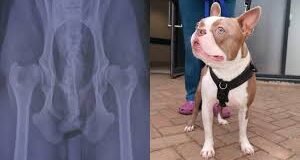Imagine dog hip replacement cost as a restaurant bill—ordering the same dish in a high-end city café versus a countryside diner will never cost the same. Just as real estate, services, and resources vary between urban and rural areas, so does the cost of veterinary procedures, including dog hip replacement cost.

Here are 17 key factors that shape the price difference between city vet clinics and rural veterinary hospitals, explained through vivid metaphors and comparisons.
Urban Challenges: The High-Rise Price Tag
1. Real Estate Costs – The Price of a Golden Cage
Big cities have towering rent prices, and veterinary clinics must charge more to cover these expenses, making dog hip replacement cost significantly higher in urban areas.
2. Cost of Living – Where Even Air Costs Money
In cities where even a cup of coffee drains your wallet, veterinary staff demand higher wages, pushing up surgical fees.
3. Advanced Technology – The High-Tech Price Hike
Urban hospitals are packed with state-of-the-art robotic surgery tools, AI diagnostics, and 3D-printed implants, which improve results but also add to the final bill.
4. Surgeons’ Expertise – The Celebrity Effect
Like booking a celebrity chef, urban vets often have more experience and specializations, increasing their fees due to high demand.
5. Demand and Supply – The Ticket to Scarcity
City pet owners flood hospitals with appointments, creating a higher demand for limited specialists, which drives up dog hip replacement cost.
6. Post-Surgery Rehab Costs – The Luxury Spa vs. The Home Remedy
Urban recovery centers resemble five-star hotels, with hydrotherapy pools and laser treatments, while rural areas offer simple, home-based rehabilitation at a fraction of the price.

7. Licensing and Regulations – The Red Tape Tax
Cities have stricter veterinary regulations, requiring clinics to invest in costly compliance measures, further raising expenses.
8. Emergency Services – The Price of Urgency
Like calling a last-minute plumber in a high-end neighborhood, urgent hip replacement surgeries cost more in urban areas due to demand for fast-track services.
9. Medication Costs – The Urban Price Inflation
City-based pharmacies often sell post-op painkillers, antibiotics, and supplements at a premium, while rural clinics may source cheaper, locally available alternatives.
Rural Advantages: Affordable Healing in the Countryside
10. Lower Overhead – The Small-Town Discount
Rural clinics don’t battle sky-high rent or excessive payrolls, making the same hip replacement surgery significantly cheaper.
11. Less Competition, More Affordability
With fewer pet hospitals, rural vets don’t face cutthroat competition that leads to expensive branding, advertising, or unnecessary luxury services.
12. Simplified Procedures – The No-Frills Approach
Rural clinics focus on practicality over perfection, avoiding premium implants when a standard replacement can work just as well.
13. Owner Involvement – The DIY Recovery Plan
Unlike urban centers where post-op care involves costly specialists, rural pet owners often take on rehabilitation tasks themselves, reducing expenses.
14. Government and University Clinics – The Education Advantage
Some rural veterinary schools offer discounted dog hip replacement cost, as students gain experience under expert supervision.
15. Community Support – The Helping Paw
Many local charities, farm vet programs, and rural pet funds exist to assist owners with surgical expenses, something less common in urban areas.
16. Telemedicine for Follow-Ups – The Virtual Vet Visit
Instead of costly in-person checkups, rural vets often use telemedicine, saving pet owners travel time and expenses.
17. Less Markup on Veterinary Supplies – The Fair-Trade Benefit
Unlike urban clinics that charge premium rates for surgical tools and implants, rural clinics often order supplies in bulk or use locally made alternatives, cutting costs significantly.
The Crossroads of Choice
Whether you choose the high-tech precision of an urban clinic or the budget-friendly expertise of a rural vet, knowing these 17 factors helps you make an informed decision. The key is balancing cost, quality, and convenience, ensuring your furry friend gets the best care at a price that doesn’t break the bank.




